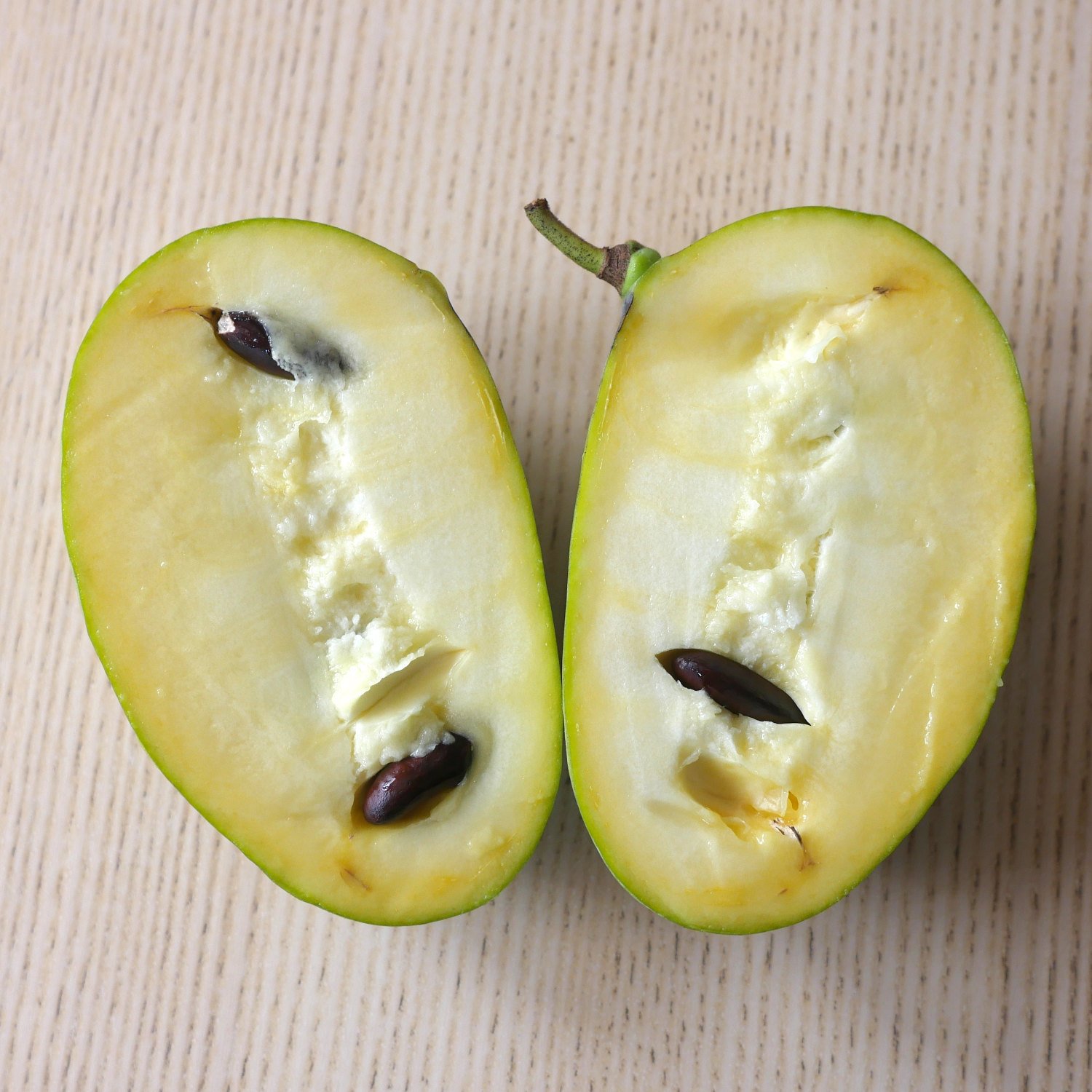What is a pawpaw
Pawpaw grown at Haoma Selections in Dartmouth, Nova Scotia.
If you've never tasted of a pawpaw, you're not alone—but this North American fruit is quietly making a comeback. With a tropical taste, custard-like texture, and deep cultural roots, the pawpaw (Asimina triloba) is one of the continent's best-kept secrets. So what exactly is a pawpaw, and why are people starting to take notice? Let’s dig in.
The pawpaw tree is a small deciduous tree native to eastern United States and Canada. It’s the only member of the tropical custard apple family (Annonaceae) that can survive cold winters, making it a rare gem in temperate climates like Nova Scotia.
The fruit is green and oblong, ranging in size from a potato to a mango. Inside, you'll find soft, creamy flesh with tasting notes of banana, mango and pineapple. The flavour is often described as tropical, despite the tree’s ability to survive freezing winters.
Eating a pawpaw is a simple pleasure. When ripe, the fruit should yield slightly to the touch, similar to a soft avocado. Slice it open, remove the large black seeds, and scoop out the flesh with a spoon. It’s rich and sweet, making it perfect for smoothies, ice cream, bread, or simply eaten fresh.
Because pawpaws ripen quickly (often over just a few days), they’re best enjoyed locally and seasonally—usually in late summer to early fall.
Pawpaw tree at Haoma Selections in Dartmouth, Nova Scotia.
Pawpaws grow wild in forests from the Great Lakes to the Gulf Coast, often in shaded areas near rivers or streams. Historically, they were a staple food for Indigenous peoples and early settlers. Despite their popularity in centuries past, pawpaws nearly vanished from public view due to their short shelf life and inability to withstand long-distance shipping. This fragility has kept them out of the spotlight, confined mostly to farmer’s markets, small orchards, or wild foraging trips.
But that’s changing. Locavores, chefs, gardeners, and foragers are rediscovering the pawpaw—especially in regions like Nova Scotia, where interest in native and niche fruit varieties is growing.
In recent years, pawpaws have been gaining cult status among foragers, chefs, and horticulturists. They're now being celebrated in local food festivals, farm-to-table menus, and even small-scale permaculture gardens.
Pawpaw trees are also attractive to home gardeners. They're relatively low-maintenance, disease-resistant, and even have beautiful dark green leaves that turn golden in the fall. Plus, the trees support the larvae of the zebra swallowtail butterfly, making them an ecologically friendly choice for native landscaping.
While the flesh of the pawpaw fruit is perfectly safe (and delicious) to eat, it's important to note that the seeds and skin should not be consumed. The seeds contain compounds that can be toxic to both humans and animals if ingested, and the skin may cause digestive discomfort or allergic reactions in some individuals. Always remove the seeds and peel the fruit before eating.
Pawpaw seedlings in Nova Scotia
Our bare root trees will be available for 2026 spring planting, with pre-orders opening in early winter. From native fruit trees like pawpaws to other resilient varieties, our spring collection is curated for thriving in Nova Scotia's unique climate. Quantities will be limited and tend to sell out quickly.
Sign up for our newsletter to be the first to know when pre-orders go live.



